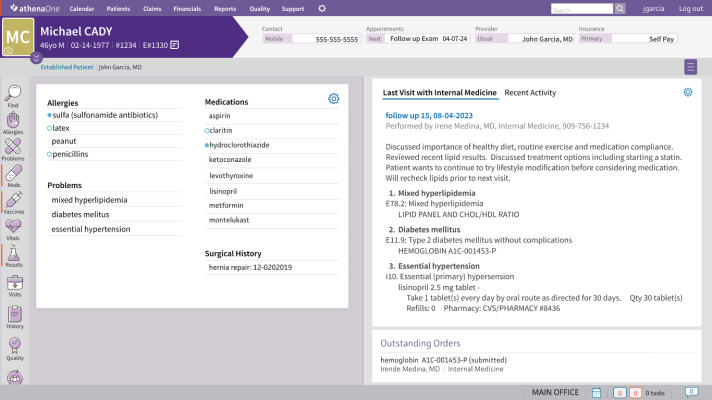The core challenges of Health Information Exchange (HIE)
Clinical interoperability is the cornerstone of data exchange in healthcare, ensuring physicians have a full picture of their patient’s health and care journey. Yet, after years of regulation and investment, the promise remains elusive. Despite the hype, the gap between expectation and reality persists, leaving care teams scrambling to get the right data at the right time.1
Over the past decade and a half, some healthcare technology companies have invested in “intraoperability,” prioritizing data exchange between sites of care within their network at the expense of the broader healthcare network. More healthcare data is being digitized each day, leading to one of the core healthcare interoperability challenges: clinicians are inundated with a flood of data. This makes it both time consuming and cumbersome to find relevant medical information to make necessary clinical decisions.2
Open access to health data is table stakes – necessary, but not sufficient by itself. At athenahealth, we continually ask ourselves how our technology can help reduce the burden on care teams as patients navigate through a growing number of care delivery sites. We work to ensure that when a patient walks in or calls for an appointment with an athenahealth provider, the clinician has access to the patient’s longitudinal record regardless of where they received care.
athenahealth’s mission for healthcare data interoperability
This is why for the last several years, we’ve invested research and development into improved clinical interoperability - moving beyond basic data exchange into purpose-built workflows and better usability so data from all care locations is incorporated easily into the athenahealth workflow. The goal of experiential healthcare data interoperability is to present real, contextualized information and insights to providers so they can deliver best-in-class care.
That’s what practices using athenaOne® deserve. Quality care is what practices want to deliver for their patients, and we’ve made tremendous progress in delivering on that promise to our clinicians.
After years of research and development we’ve introduced a new vision for an AI-native EHR designed to act an intelligent, adaptive assistant. It continuously updates external patient data to make it more usable for clinicians at the point of care. As these clinical and operational AI tools continue to evolve and are deployed intentionally and natively across the platform, they’re paving the way toward an era of intelligent interoperability.
The future of clinical interoperability: introducing ChartSync
We recently previewed a new product capability that illustrates what interoperability looks like. ChartSync is a feature that helps enable clinicians easily view data from external sources that are globally connected to athenaOne. Through automation or with fewer clicks, clinicians can easily add relevant information into the patient's chart.
Using ChartSync, clinicians are able to view consolidated, de-duplicated external data and documents without leaving their existing workflow. What's more, they can also add relevant external data more efficiently into the patient’s chart through automation or one-click action.

ChartSync presents a better way to connect
When you join athenahealth’s network, you’re automatically connected to the broader healthcare ecosystem so your practice can easily exchange information with thousands of labs, imaging centers, pharmacies, hospitals, health systems, and more. ChartSync uses these connections to automatically pull in available patient data from the network, with native AI in the athenaOne platform surfacing it smartly at the right place in the clinical record and right time in the clinical workflow.
Next, ChartSync identifies key clinical data such as allergies, medications, and lab results, deduplicates this information across sources and existing chart data, and then surfaces it within your clinical workflow. Clinicians control what information is added to their patients' chart through a one-click action or, for even greater efficiency, by configuring automation settings to automatically reconcile incoming patient information. Best of all, the experience is fully embedded into the clinical workflow, so users aren’t sifting through an ocean of information to find the critical insight they need.
We’re excited to expand ChartSync functionality across 2025 to help clinicians connect quickly and easily via interoperability, and demonstrate how athenahealth is working to help address some of challenges of HIE in healthcare. To learn more about how ChartSync helps clinicians, listen to a recent episode of the athenahealth podcast.
More electronic health record resources
Continue exploring
1. 2024 Physician Sentiment Survey, commissioned by athenahealth and fielded by Harris Poll, Jan 2024.
2. NIH. (April 7, 2022). Patient Safety Issues from Information Overload in Electronic Medical Records. Retrieved Feb. 2025, from https://pmc.ncbi.nlm.nih.gov/articles/PMC9422765/













